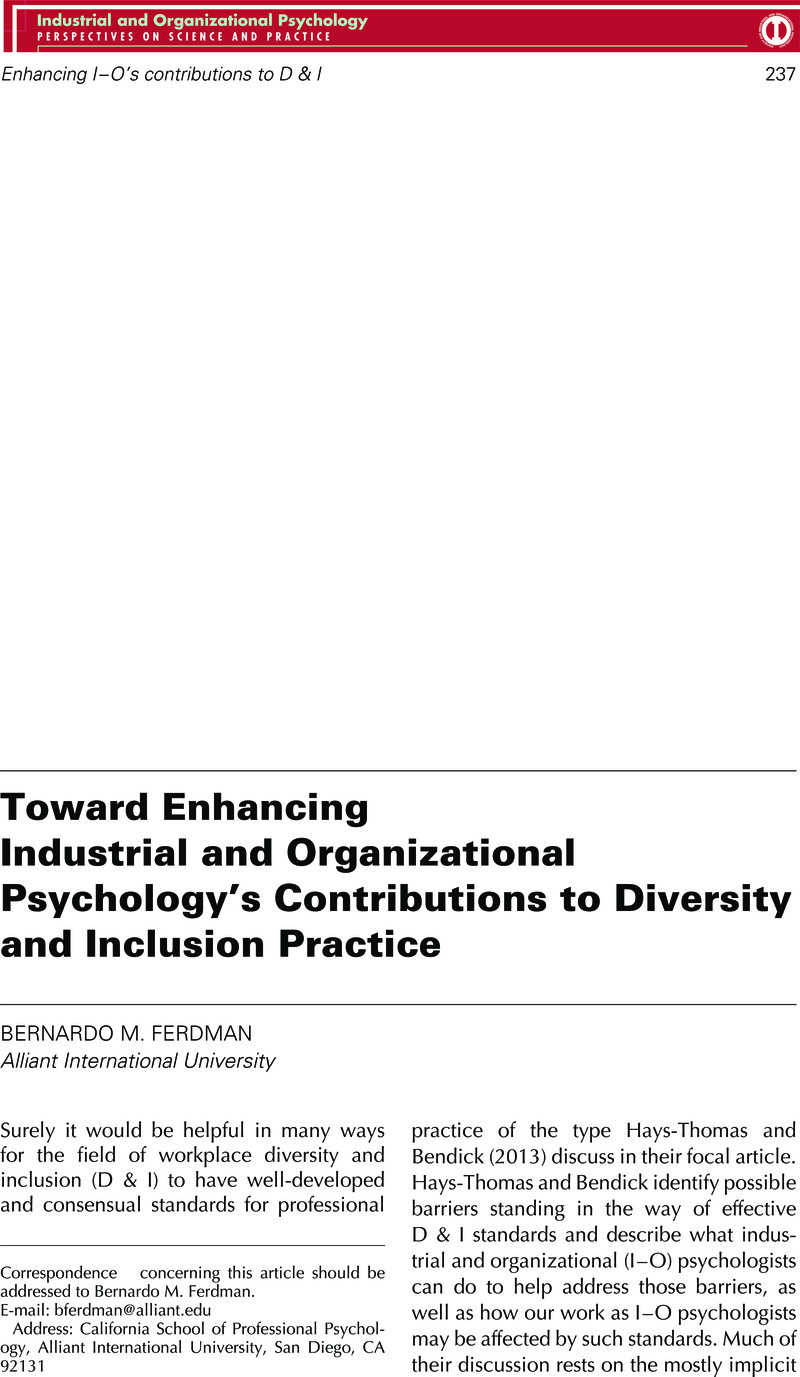Crossref Citations
This article has been cited by the following publications. This list is generated based on data provided by Crossref.
Roberson, Loriann
and
Kim, Regina
2014.
Stereotype Threat Research Hits the Sweet Spot for Organizational Psychology.
Industrial and Organizational Psychology,
Vol. 7,
Issue. 3,
p.
450.
Jiang, Zhongnan
DeHart‐Davis, Leisha
and
Borry, Erin L.
2022.
Managerial Practice and Diversity Climate: The Roles of Workplace Voice, Centralization, and Teamwork.
Public Administration Review,
Vol. 82,
Issue. 3,
p.
459.





